U.S. Review
Retail Sales Turn Positive Amid a Week of Positive Data
- Retail sales increased 0.6 percent in March. Strong control group sales this month should limit the fallout from a weak consumer in first quarter GDP.
- In March, industrial production expanded 0.5 percent, bringing a 4.5 percent annualized increase for the quarter.
- Inventories increased 0.6 percent in February. Recent gains should provide a substantial boost to GDP in the first quarter.
- Housing starts rose 1.9 percent in March. Upward revisions to prior data painted a much rosier picture of residential construction over the past few months.
A Rosy Week of Data: Spring Is in the Air
Retail sales were above consensus and increased 0.6 percent in March, reversing the recent three-month string of declines. Winter weather in the Northeast, which was widely expected to have a greater adverse effect, was limited. The improvement was driven by auto sales, health and personal care and non-store retailers’ sales. Control group sales, which are used to calculate GDP, were relatively strong at 0.4 percent. While we still expect consumption to be weak in Q1, the uptick in March retail sales should help the sector be less of an overall drag.
Industrial production beat expectations and expanded 0.5 percent in March. The gain follows a 1.0 percent increase in February, bringing a 4.5 percent increase for the first quarter on an annualized basis. The bulk of March’s rise occurred from a bounceback in utilities output. The winter weather was again at play here, as the highly populated Northeast and South faced increased heating needs due to below average temperatures. Mining output continued to recover following the oil rout and grew 1.0 percent. Meanwhile, manufacturing output stalled after February’s substantial increase, rising just 0.1 percent for the month. The fact that the manufacturing sector was able to register even a modest improvement following the prior month’s performance indicates that the sector is in relatively good shape.
In February, business inventories rose 0.6 percent, marking the third consecutive month of gains. Inventory growth expanded at a 7.3 percent annualized rate, the fastest clip in over five years. Sales were comparatively weak, growing 0.4 percent for the month. This is consistent with the slowdown in retail sales to start the year, and sales should align back with inventories as the consumer returns to the fold. We expect the solid pick up in inventories to contribute roughly one percentage point to first quarter GDP.
Housing starts increased to a 1.32 million annual rate in March, a 1.9 percent gain. Volatile multifamily starts accounted for much of the gain, rising 14.4 percent, while single-family starts declined 3.7 percent for the month. Homebuilding in the West and South continued to soar, while winter weather effects were still evident in the Midwest and East. The report was also heavy with significant upward revisions to prior-month data, and it is now apparent that new home construction fared much better in the first quarter than had been previously indicated.
New survey data released this week was somewhat weaker compared to prior months, yet were overall positive. The NAHB/Wells Fargo Housing Market Index dropped slightly; however, builder confidence remains at historically high levels. The Architecture Billings Index also moderated somewhat in March; however, it has been in expansion territory for the past six months, a good sign for nonresidential development in the coming quarters.
Rounding out the week, the Leading Economic Index (LEI) continued its upward trajectory and increased 0.3 percent in March. The rise follows two strong readings in January and February, and provides further evidence that the economy is well poised to strengthen in 2018.
U.S. Outlook
Existing Home Sales • Monday
Contract signings rose 3.0 percent during February, which nearly reversed a 3.2 percent drop in January. Single-family sales were the sole reason for the rise in February. Sales were up only in the South and West.
Pending home sales, which are measured at the time of signing and tend to lead existing sales measured at closing, rose in February for the first month since November. Continued extreme weather in March may hold back some activity this spring, particularly in the Northeast and Midwest. We expect housing to be a drag on first quarter GDP but to contribute positively to the economy in 2018 as a whole. The underlying strength in the economy and income growth should offset headwinds facing homebuyers this year. A tight supply of homes for sale and rising interest rates are likely to continue challenging affordability in many markets.
Previous: 5.54M Wells Fargo: 5.53M Consensus: 5.55M
Durable Goods • Thursday
February’s strong increase of 3.0 percent in durable goods orders was a welcome indicator that business investment is still alive and well after soft start to the year. Core orders rose 1.4 percent after two straight months of declines. The improvement in this measure of business investment and industrial production in February put hard data from the factory sector closer in line with the elevated survey measures and likely helped assuage some concern that the factory revival was losing traction even with tax cut euphoria.
February’s uptick certainly improved the outlook for Q1 business investment in GDP. However, even with the improvement, it is unlikely to see three consecutive quarters of double-digit growth. We have penciled in a respectable 6.6 percent increase in equipment spending in Q1 with the sector growing 8.0 percent in 2018 as a whole. Tax cuts are still a tailwind for the sector.
Previous: 3.0% Wells Fargo: 1.6% Consensus: 1.2% (Month-over-Month)
GDP • Friday
We expect real GDP growth to have slowed in the first quarter of the year. Our call for growth at a 1.3 percent annualized rate is lower than the consensus view. Personal consumption grew at a 4.0 percent pace in Q4-2017, which was a very strong showing. Spending data started the year off slowly, but incomes continued to rise at a solid pace and the savings rate rose, giving the consumer room for a solid bounce-back in coming quarters. The extreme weather in the first few months of the year also likely weighed on consumers’ spending. Residential construction is slated to have declined in Q1, partially because of the weather and some payback for the ramp up in Q4 that reflected rebuilding activity after hurricanes in 2017. International trade will likely trim growth from the headline, as strong growth in imports outpaced strong export growth.
Business investment is slated to expand solidly, though at a slower pace than H2-2017. Government spending should add to Q1 growth.
Previous: 2.9% Wells Fargo: 1.3% Consensus: 2.0% (Annualized, Quarter-0ver-Quarter)
Global Review
IMF Data Affirms Global Upswing in 2017
- Data released this week showed global GDP grew 3.8 percent in 2017, the fastest pace since 2011. While global demand clearly firmed in 2017, we look for the global economy to grow more in line with its long-run average over the next two years.
- China’s Q1 GDP growth held steady at 6.8 percent year over year, although growth in investment spending and industrial production slowed in the quarter.
- The Bank of Canada left its policy rate unchanged at its meeting this week in light of weaker Q1 GDP growth and its generally cautious approach to policy tightening. In Europe, March inflation data surprised to the downside.
IMF Data Affirms Global Upswing in 2017
This week, the International Monetary Fund’s (IMF) April 2018 World Economic Outlook report showed that global GDP grew 3.8 percent in 2017, the strongest pace of growth since 2011. The IMF’s report clearly affirms the synchronous global upswing that occurred over the past year, as many economies enjoyed broadbased expansion. Low interest rates likely supported the consumer and business sectors, and price pressures largely remained benign.
Although global growth picked up in 2017, we look for output to grow closer to its long-run average over the coming years, as economies such as China fall more in line with their advanced counterparts. China released its Q1 GDP figures this week, and while overall GDP growth matched the pace of the prior two quarters, at 6.8 percent year over year (top chart), investment spending and industrial production proved more lackluster through March. Slower growth in these sectors likely reflects the Chinese government’s efforts to create a “soft landing” as the economy transitions from a production to consumption model of growth. However, China also faces several structural challenges that will likely restrain growth going forward. The run up in investment spending and manufacturing has created a highlyleveraged corporate sector, which could be damaging to the economy in the long run if not kept in check. On net, the outlook largely remains positive, and we look for GDP growth in China to slow only modestly, to 6.3 percent in 2018 and 6.0 percent in 2019.
Meanwhile, the Bank of Canada (BOC) left its policy rate unchanged this week as expected (middle chart), in line with its generally restrained approach to policy tightening, weaker-thanexpected Q1 GDP growth and uncertainty surrounding NAFTA. Its monetary policy statement was still relatively upbeat and discussed transitory factors leading to slower Q1 GDP growth, such as new mortgage guidelines and weaker export growth, receding in the coming quarters. The Governing Council also cited progress in inflation and wage growth, stating, “This progress reinforces Governing Council’s view that higher interest rates will be warranted over time.” Core measures of inflation are currently hovering around the BoC’s symmetric 2 percent target, and we look for the BoC to raise rates as soon as Q3-2018.
Finally, inflation data released in Europe this week surprised to the downside. The Eurozone’s March CPI inflation rate was revised lower to 1.3 percent year over year and remains a roadblock to faster removal of policy accommodation from the European Central Bank, as we discuss on the next page. However, lower inflation in the U.K., falling to 2.5 percent year over year in March from 2.7 percent in February (bottom chart), is a welcome event considering it is currently above the Bank of England’s (BoE) 2 percent target. As inflation recedes, growth should pick up and be supportive of further tightening from the BoE, and we look for the BoE to raise rates at its May 10 meeting. However, uncertainties surrounding Brexit negotiations could also weigh on growth. The E.U. and U.K. began talks on the future of their trading relationships this week, which will affect the degree to which a seamless transition will occur.
Global Outlook
ECB Meeting • Thursday
The Eurozone economy is growing steadily, but the inflation data there remain benign as evidenced by the 1.3 percent rate of CPI inflation reported in March.
The ECB left rates unchanged at its most recent meeting in March; however, the accompanying policy statement removed language regarding the possibility of additional quantitative easing (QE) measures if the outlook deteriorates. After having already halved the pace of QE, we look for the ECB to eventually end its current €30 billion per month pace of asset purchases by the end of this year and begin to hike rates at some point in 2019.
The ECB meeting next week will give financial markets an idea of how policymakers’ intentions are evolving against a backdrop of only tepid inflation in Europe.
Previous: Asset purchases at €30B per month Wells Fargo: No Change
Bank of Japan Meeting • Friday
Policymakers in Japan must be careful not to steer expectations toward eventual policy normalization even a moment too soon, though the Bank of Japan (BoJ) has signaled that it will begin the wind-down before the expiration of Governor Kuroda’s new five-year term.
The Bank of Japan will eventually normalize monetary policy, but it has no intention of telegraphing its intent to financial markets. The market’s focus has arguably shifted to place more emphasis on the quantity of BoJ purchases and perhaps less emphasis on interest rates. The nearby chart shows how the pace of purchases has come down in recent months.
The BoJ may offer some fresh perspective on its intentions at its scheduled meeting at the end of this coming week, but we are not expecting a major shift from the BoJ at this time.
Previous: QQE with Yield Curve Control Wells Fargo: No Change
At its March policy meeting, the Bank of England kept rates unchanged, but, as we have written in recent weeks, we suspect policymakers will eventually raise rates again perhaps as soon as the May meeting.
The U.K. job market is on solid footing with the unemployment rate having recently dropped another notch to 4.2 percent. With PMIs still firmly in expansion territory and back-to-back increases in industrial production, there is a case to be made for another solid outturn for economic growth in the first quarter. The initial estimate for first quarter GDP in the United Kingdom will print this coming Friday. A pickup in the pace of growth would further underpin our expectation for a rate hike at the May 10 meeting of the Bank of England.
Previous: 1.4% Wells Fargo: 1.4% Consensus: 1.4% (Year-over-Year)
Point of View
Interest Rate Watch
Risky Business
Fed officials have taken a more upbeat tone on the outlook this year. Back in March, the FOMC raised its estimates for GDP growth while lowering forecasts for where the unemployment rate will end the year.
The minutes from the March meeting, released last week, suggest future adjustments could lean toward an even more favorable view of the economy. More Fed officials believed the risks surrounding GDP forecasts were tilted to the upside (top chart). Similarly, if officials miss on the unemployment rate, they expect it is more likely to be because joblessness improves faster, rather than slower, than their projections (middle chart).
Downside Risks to Inflation: The End of an Era
Forecasts for inflation in 2018 were unchanged, although the committee did see core inflation rising slightly faster in 2019.
The relatively stable inflation projections come despite growing price pressures. Commodity prices have increased since the start of the year, while solid global growth and a weaker dollar are supportive of higher import prices. Moreover, fiscal stimulus when the economy is around full capacity indicates businesses are finally at a place to pass on higher costs to consumers.
Therefore, while the Fed’s inflation forecasts have not changed much, the risks surrounding those forecasts have. No FOMC member saw the risks to their inflation forecasts as tilted to the downside in March. For core inflation, that was the first time for such a feat since the FOMC began keeping track in 2011 (bottom chart).
Inflation has been the major question mark for the Fed’s tightening plans after core PCE has fallen short of 2 percent for all but five months of the current expansion. The shifting risk profile signals that the Fed is feeling more confident about meeting the price side of its mandate in coming quarters.
As a result, we would not be surprised to see projections for where Fed officials expect the fed funds rate to end the year drift higher again in June as members try to achieve a policy with balanced risks.
The Federal Reserve’s most recent Beige
Book conveyed healthy economic conditions throughout the 12 Federal Reserve Districts. Modest-to-moderate growth was reported across all districts, as labor markets remained tight and price pressures continued to materialize.
Input price pressures persist, with price increases reported across all districts. As price pressures begin to transition to the consumer, conditions will likely foster gradual wage growth. Similarly, tight labor market conditions, coupled with increasing difficulty to find skilled labor, support an increased wage environment.
The supply of available homes remained constrained in some districts, which continues to weigh on home sales. Low inventory, however, encourages residential construction, which expanded further across the nation. Similarly, commercial real estate construction was reported to have picked up as loan demand continued.
Although the overall economic outlook remained positive across the districts, concerns regarding the recent tariff discussion/retaliation were noted amongst particular sectors (manufacturing, agriculture, transportation). In our prior analysis on the topic, we demonstrate the varying degree to which specific industries are vulnerable to tariff retaliation. The anecdotal information provided by the Fed districts indicates much of the nation continued to grow at a modest-to-moderate pace.
Topic of the Week
Can Big Data Improve Recession Prediction?
Big data applications in the economic and financial world have become increasingly popular over the past several years, especially as large data sets become more easily accessible. In a report released this week, we outlined a framework to use machine learning and statistical data mining tools to more accurately predict recessions. Every recession is unique, so it is crucial for decision makers to use the most accurate approach to guide policy responses.
We compared three recession prediction methods to answer the question of whether machine learning and statistical data mining improve recession prediction accuracy. We first examined the statistical data mining method using a logit/probit model that ran 30 million different models using more than 500,000 variables. The top chart shows the probability of different specifications of the model reporting a true outcome versus a falsepositive outcome, with the left upper corner showing the best prediction. We compared results to two other methods, the random forest approach and gradient boosting technique, which include a similar number of variables. We compared the three advanced models to a simpler econometric model with only one recession predictor, the yield curve. In our tests, the random forest approach outperforms all other models in both in-sample and out-of-sample situations. The gradient boosting model comes in second, while the statistical data mining approach captures third. If we combine all four probabilities, that method is still unable to beat the random forest’s prediction accuracy. As seen from point A (bottom chart), the random forest method indicates the best in-sample fit. A more detailed explanation of our methodology is available in our report referenced above.
Our analysis led us to conclude that statistical techniques utilizing big data can improve recession prediction accuracy. Moreover, our models suggest a less than 5 percent chance of a recession during the next 12 months. However, it is up to the analyst to either obtain an accurate answer by utilizing big data efficiently, or end up with a useless answer by providing irrelevant inputs (more noise than signals) to the model.




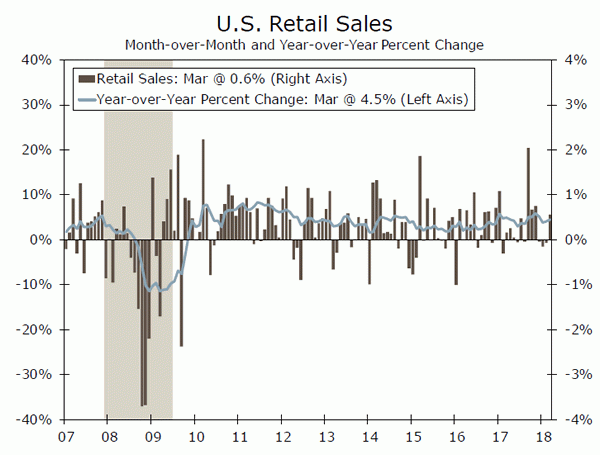
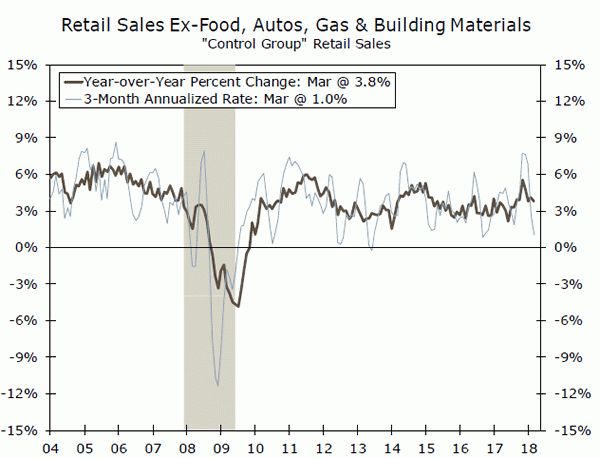
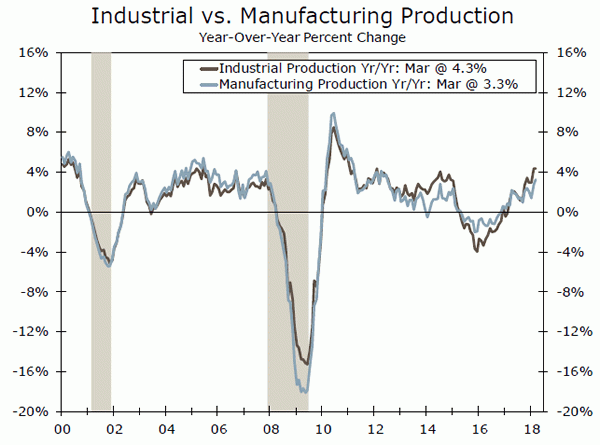
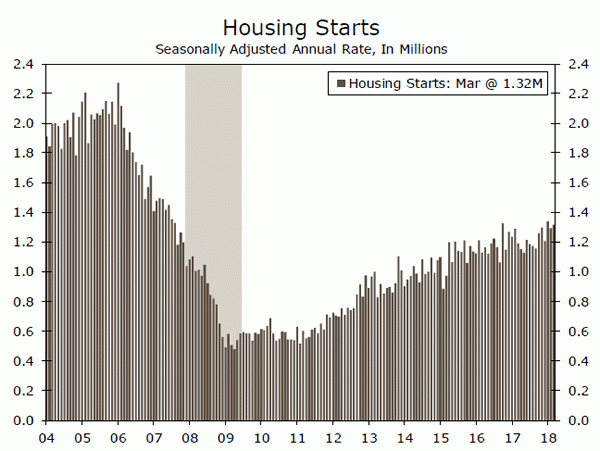
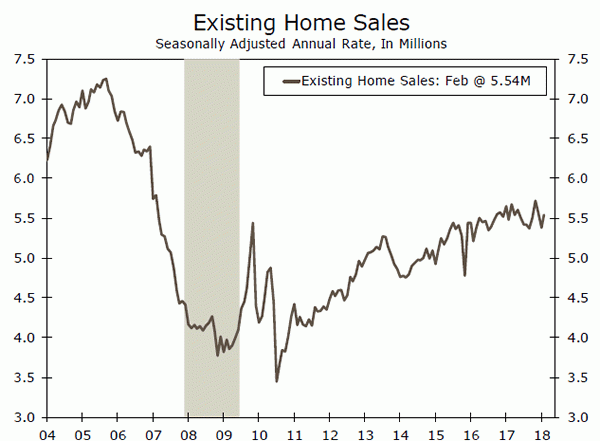
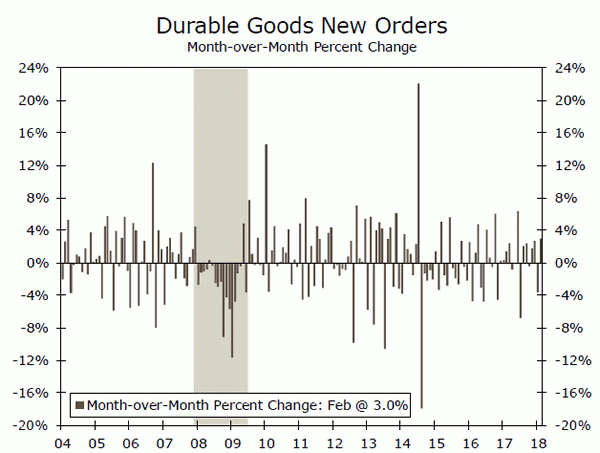
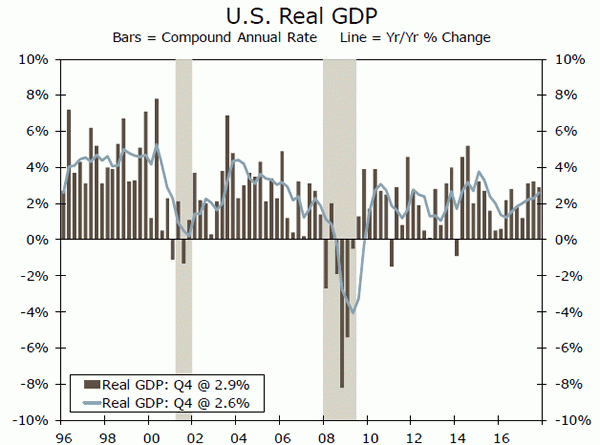
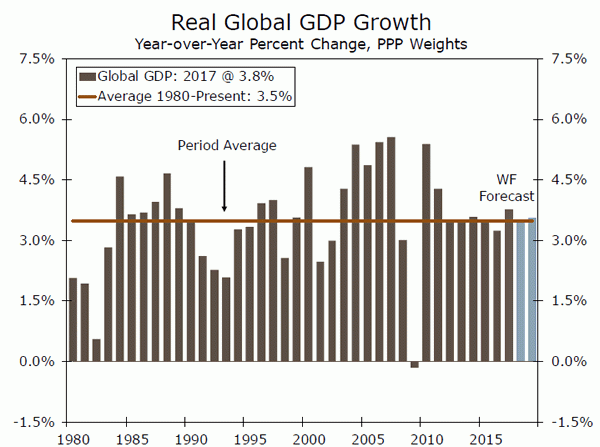
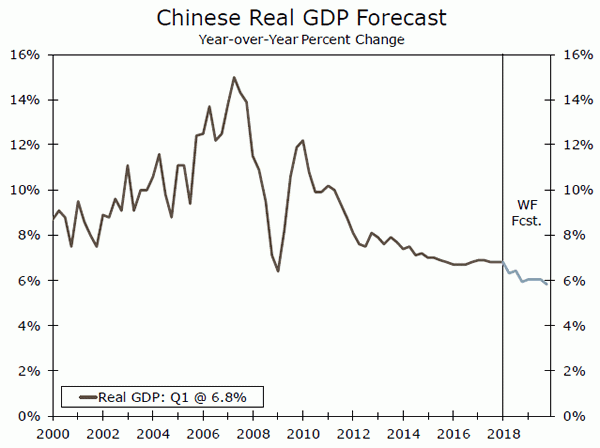
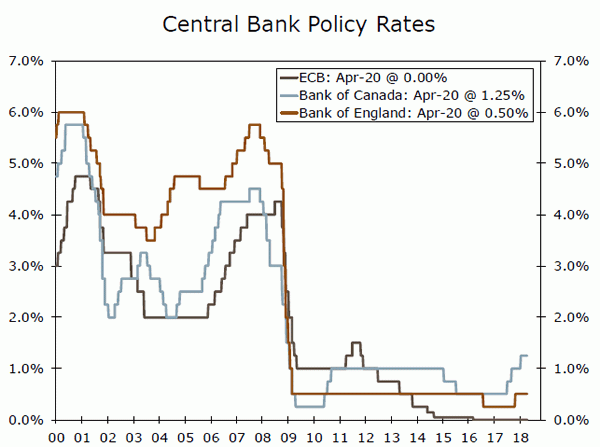
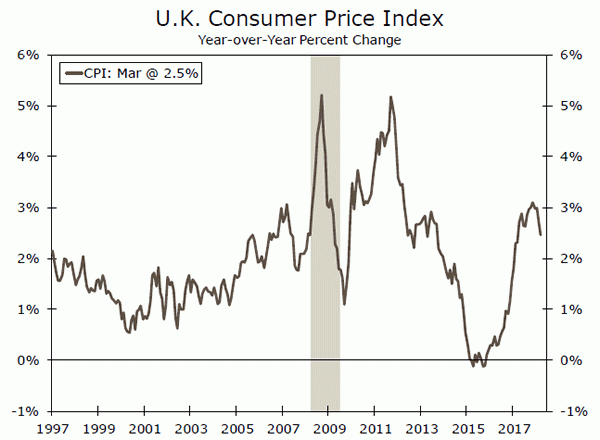
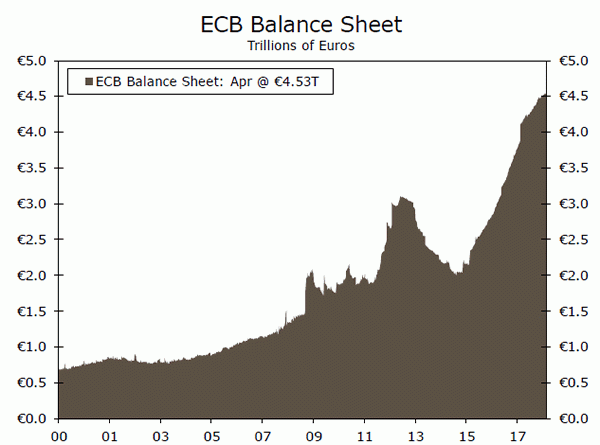
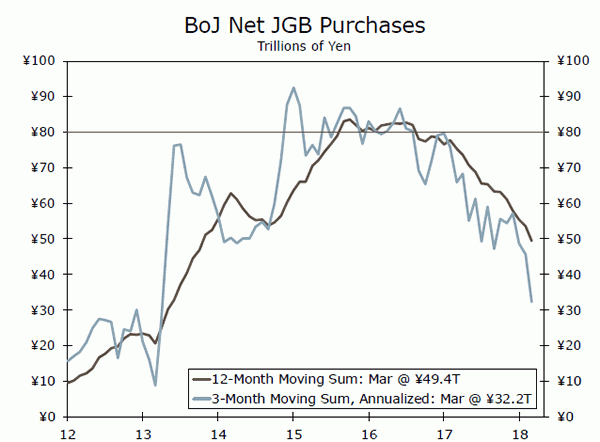
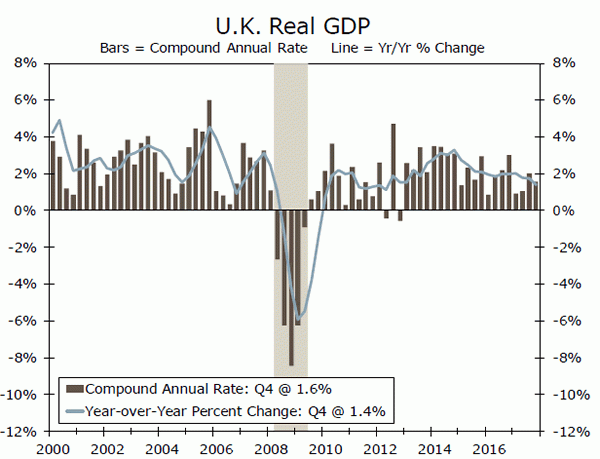
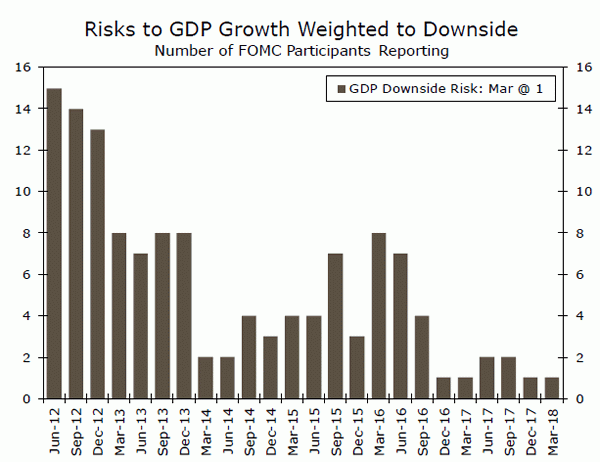
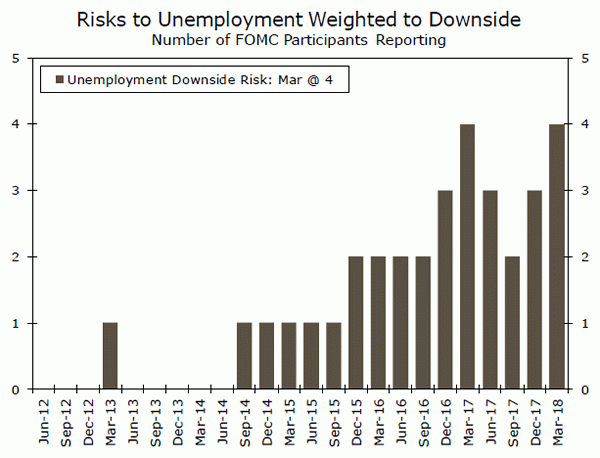
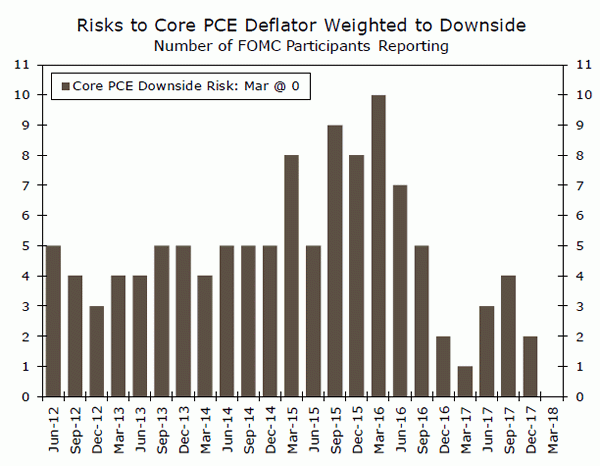

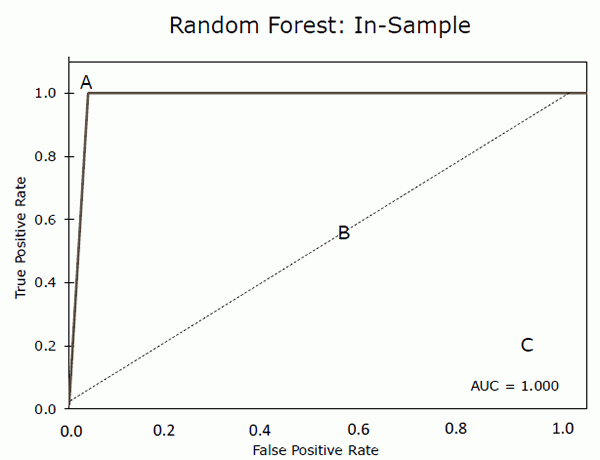

![Week ahead – ECB set to cut, BoC might pause as Trump U-turns on tariffs [Video]](https://www.actionforex.com/wp-content/uploads/2018/04/f-ecb29-218x150.jpg)









